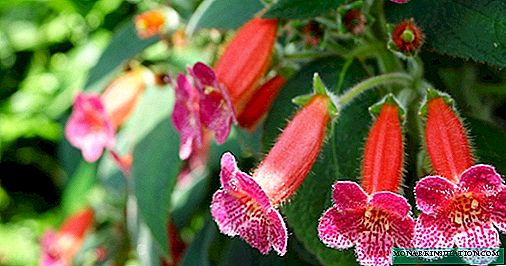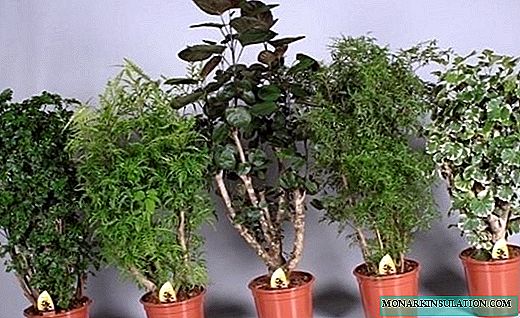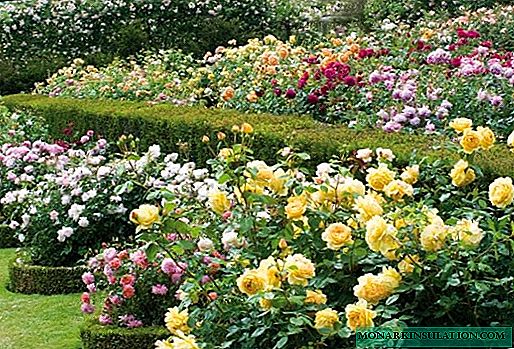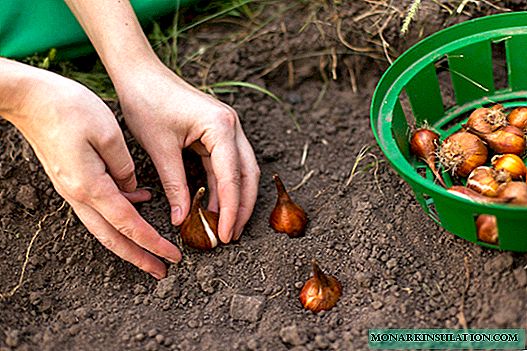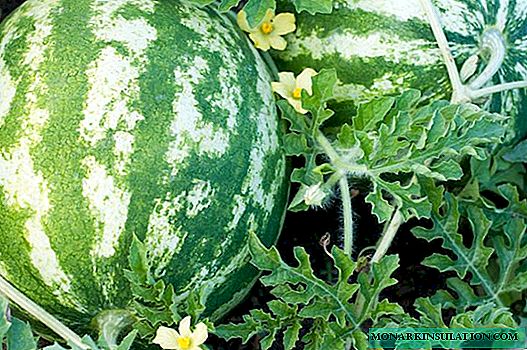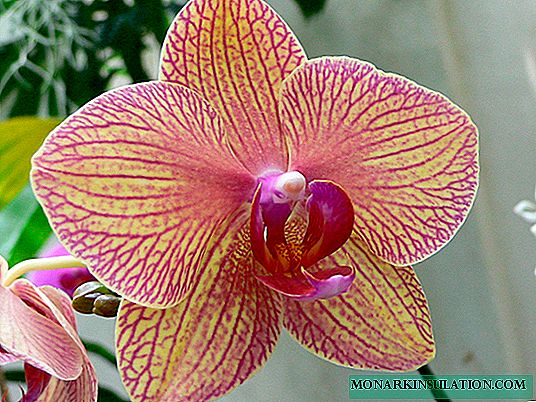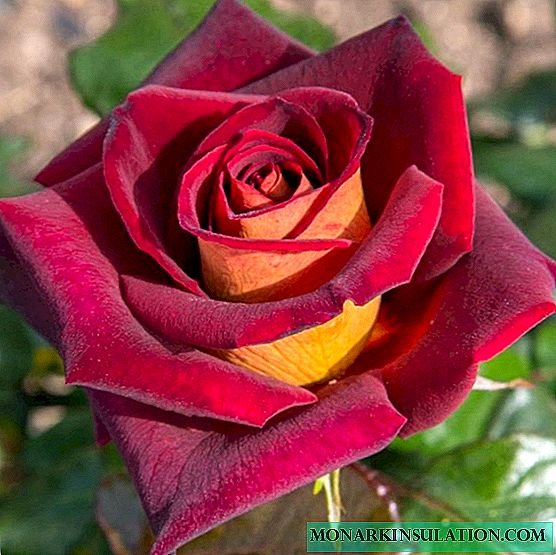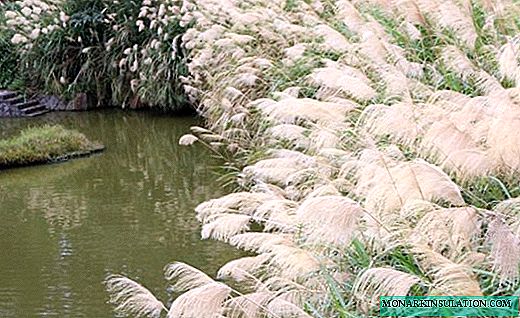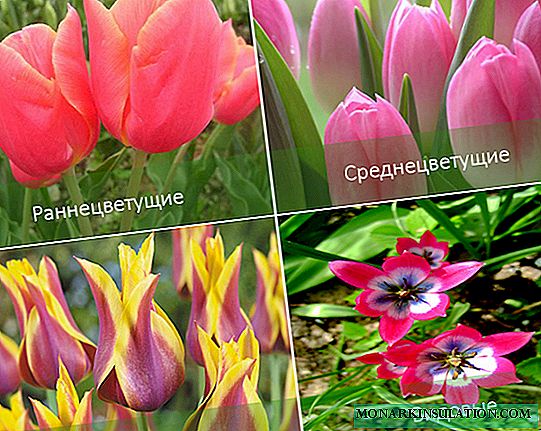Geranium is considered one of the most unpretentious indoor plants. But gardeners who grow flowers on their windowsills know how important it is to create suitable conditions for it. One of the required procedures is moving into a new pot. This requires knowing exactly how to transplant the geranium.
Why transplant geraniums
The need to transplant a plant occurs when the root system grows and it becomes crowded in the planting capacity. You can understand this by raising the pot - the tips of the roots will be visible through the drainage holes. At the same time, the flower begins to suffer from a constant nutrient deficiency, is easily exposed to diseases, and there is a risk of death.
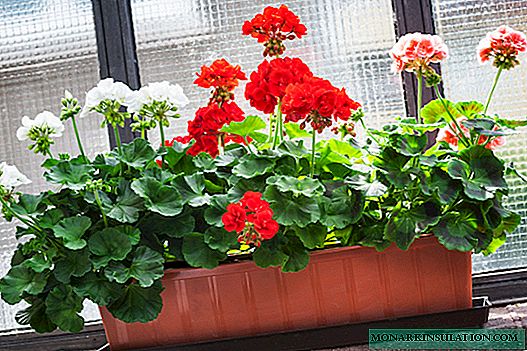
The flower needs transplants as it grows
A transplant may be necessary in cases of:
- occurrence of root rot due to violation of the irrigation regime;
- stimulation of the onset of the flowering stage after a prolonged dormant period;
- excessive exposure of the lower part of the stems;
- soil contamination with pests and pathogens;
- the need to replace a damaged pot;
- severe depletion of soil for pelargonium;
- needs for rejuvenation.
Additional Information! To rejuvenate the flower, it must be planted in a new container. It is possible to simultaneously reproduce by dividing the bush.
The optimal time for the procedure
The time of its adaptation in a new place largely depends on what time the flower is transplanted. Typically, home geranium transplants are performed in the spring. With an increase in daylight, the plant starts vegetative processes, it most easily perceives stressful changes. At the same time, some flower growers are guided by the Lunar calendar, knowing about the reaction of plants to the movement of the night luminary.
The worst months are the winter months. Transshipment of the plant, carried out in March or April, will give the best results and will be the most painless.
Note! Pelargonium transplantation into the garden, whether it is a royal, zonal or ivy variety of plants, should occur in late spring, that is, in the second half of May.

It is necessary to transfer the flower back to the house or apartment before the onset of cold weather.
Is it possible to transplant geranium during flowering or in summer
A geranium transplant is allowed to be carried out at any time of the year, but under favorable conditions, the plant blooms almost continuously throughout the summer. Is it possible to transplant blooming geraniums?
With active budding, the bush spends a lot of resources, and entails a long recovery period. As a result, the bush may not cope with stress and lose flowers. For this reason, it is recommended to postpone the transplant for another time.
Do I need a transplant after purchase
Many flowers purchased quickly die, being in a home environment. At the same time, the plant is provided with complete rest so that it adapts to changing external conditions, because in a short period of time the flower survived a number of stressful situations: transplanting on the garden site, transportation, and keeping it in the store.
Experienced flower growers try not to transplant geraniums immediately after acquisition. In the first days after the appearance of a new plant in the apartment, the optimum temperature and humidity are maintained.
Preparing a plant for transplant
The day before the flower is transplanted, it is abundantly watered so that a radical earthen lump comes out easier from the pot when transplanting the plant.
Note! Some gardeners recommend the use of stimulant drugs that will help geraniums recover faster.
There are no other ways to minimize plant stress during transplantation. The only other way to mitigate the consequences of the procedure is to choose the optimal time.
Pot size and material
When choosing a new pot for transplanting geraniums, the reasons for the procedure are taken into account. If you want to move a flower that has become cramped in the former planter, the size of the new container should be 1-2 cm larger. Choosing a pot too large will cause the root system to begin to develop a new space, which will prevent the flowering period from starting term.

In a large pot, the plant turns into an untidy overgrown bush
When a flowering stimulating transplant is performed, it is recommended to take a pot that exactly matches the volume of the root system. The same applies to the movement of geraniums for the purpose of rejuvenation and the simultaneous division of the bush into several independent plants - each container should fit a new instance.
It is allowed to use a landing tank made of any material. Choosing a plastic planter, take into account that it has poor breathability, but is more practical to use. A ceramic pot is more expensive, but more attractive. It is environmentally friendly and better suited for long-term cultivation. Due to the porous structure of the material, delicate roots can grow into the pot, which will lead to the risk of damage during transplantation.
Important! Regardless of the material from which the flowerpot is made, it must have special openings to remove excess moisture.
Soil composition
Properly selected soil for geraniums will relieve the plant from severe stress. Soil for room geranium should include the following components:
- turf soil for geranium - 2 parts;
- rotted humus - 2 parts;
- coarse sand - 1 part.
The soil may contain a small amount of peat. Another option is to purchase universal soil for flowering crops. Purchased land fits most indoor flowers, fully supplying their nutritional needs.
Additional Information! To optimize the composition for planting geraniums, it is enough to add a little perlite and coarse river sand to it.
Drainage layer
Whatever the composition of the soil mixture, soil for room geranium should include a drainage layer placed on the bottom of the pot or planting pit. Without it, excess moisture will stagnate in the root zone, as a result of which the root system will rot. As drainage use:
- broken brick;
- expanded clay or pebbles;
- fine crushed stone.
To prevent the drainage holes in the bottom of the pot from clogging, experienced growers cover the drainage layer with a small piece of building mesh.

Drainage is placed at the bottom of the pot
How to transplant geranium - step by step instructions
Knowing what kind of land is needed for geraniums, they begin transshipment of plants. It is better to figure out in advance how to transplant geraniums at home step by step and prepare everything you need.
In addition to moving the indoor flower from one planter to another, it is often transplanted into the open ground in spring and transferred back with the onset of autumn.
At home from one pot to another
Handling home geraniums is easy. The procedure consists of the following steps:
- A drain is placed at the bottom of the tank.
- A little earth is poured over the drainage layer.
- The flower is carefully removed from the former pot along with a root lump.
- The plant is placed in a new pot, filling the voids with soil mixture.
After the transplant is completed, the flower is returned to the same place. The first watering is carried out not earlier than in 3-4 days.
In open ground
With the correct movement of geraniums in open ground, perennial decorates the site with abundant flowering. To make the plant comfortable in the garden:
- The soil in the selected well-lit area is dug up with the addition of compost mixture.
- A small landing hole is prepared, with a depth equal to the height of the pot in which the flower is contained.
- The plant is carefully transshipped to a new place and the earth is compacted around it with his hands.
- Transplanted geraniums are abundantly watered with settled water.
Additional Information! When planting cuttings in the ground, they are buried by 2-3 cm. The distance between them should be at least 25 cm.
From open ground to pot in autumn
For wintering, geraniums are returned to room conditions. You should figure out how to plant geranium in a pot in this case.

Inspection of the roots avoids the introduction of insect pests into the house
After a thorough inspection:
- The earth around the bush is watered.
- Prepare a pot with drainage and a small layer of earth.
- The flower is extracted from the soil along with a root lump.
- Gently remove soil from the roots, inspect. At the same time, strongly overgrown, non-viable tips are cut off.
- Geranium is moved into a pot, sprinkled with soil and gently tamped.
A flower that spent the summer outdoors is transferred to a well-lit place with minimal shading. It is also advisable to trim the shoots to a length of 20 cm to help the geranium get used to the new environment.
Follow-up care
The transplanted geranium requires special attention and attention. First of all, the changes relate to the location of the flower: accustomed to bright lighting in the south or southeast window, the plant is transferred to the windowsill with moderate light. Geraniums are returned to their usual place 1-2 weeks after the procedure. With watering, do not be zealous. The frequency of soil moisture depends on the rate of soil drying in the pot.
Important! Geranium does not tolerate spraying and excessive humidity. From it, a plant can become sick and die.
When a new nutrient ground for geranium is used during transplantation, the flower is not fed for 2-3 months after the procedure. After the specified time, the geranium bush is fertilized once a month with a complex composition for flowering indoor plants. Concentrated preparations are diluted and used strictly according to the instructions. The exception is only the first feeding, during which the dosage should be 2-3 times lower than the minimum.

After summer on the street, geraniums are kept for some time on a balcony or loggia
A strong and undemanding plant can be in the same pot for many years and feel good. Growing a perennial at home, sooner or later you will have to familiarize yourself with the rules of transplantation and reproduction. It is important to consider what kind of land geraniums love. A well-transplanted bush gratefully responds with abundant flowering.

